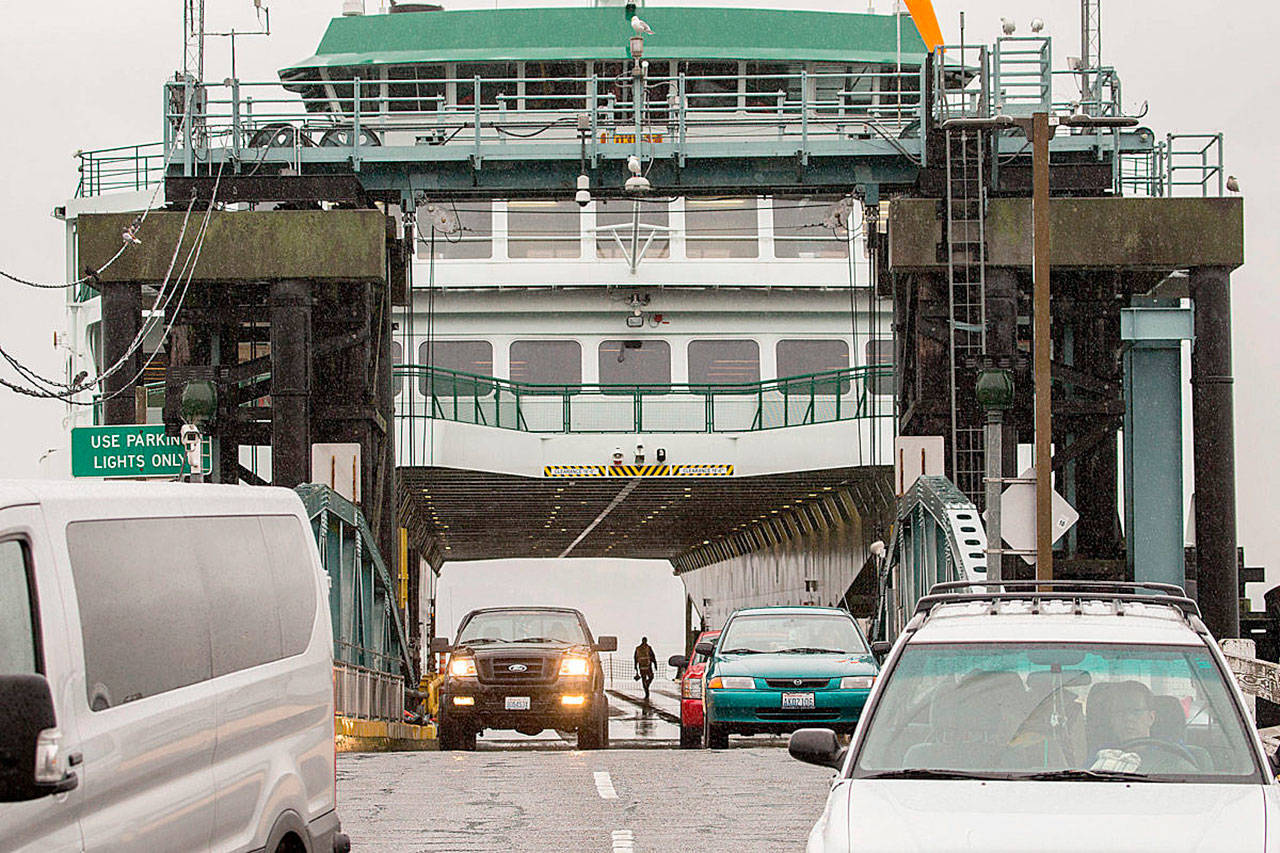Two elected officials from Whidbey Island who’ve long been involved in advocating for ferry service have ideas for improving a draft of a long-range plan that was recently released.
The state also wants to hear from everyday riders.
The Washington State Ferries’ proposed plan looks out to 2040 and lays out a series of recommendations largely focused on capital improvements. It calls for growing the statewide fleet from 22 to 26 vessels and replacing 13 vessels over the timeline.
It also calls for a system-wide switch to hybrid-electric-powered vessels.
Besides that which is already in the works, the main changes planned for the two ferry routes to Whidbey Island are the addition of overhead loading at the Clinton dock, more vessel capacity on that route during the peak season and an addition of service hours and the extension of the spring season on the Coupeville-to-Port Townsend route.
State Ferries is holding open-house meetings in the region to explain the plan and gather input. An open house is planned for 5:30-7:30 p.m., Wednesday, Oct. 3, at Freeland Hall, 1515 E. Shoreview Drive.
Earlier this year, local officials voiced concern with the State Ferries’ projected ridership growth for the Clinton-to-Mukilteo route. The draft says system-wide ridership is expected to increase by 30 percent from 2017 to 2040, but only a 16 percent increase is projected for the Clinton/Mukilteo route.
Island County Commissioner Helen Price Johnson, state Rep. Norma Smith, R-Clinton, and several others argued that State Ferries was underestimating the potential increase in ridership, which was largely based on the modest population growth expected for Island County. They pointed out that factors like the opening of the new Mukilteo terminal and regional growth may affect ridership.
The complaints had a modest effect. The draft states that State Ferries decided to utilize “a slightly higher route ridership projection” after working with Island County staff and elected officials.
The original estimate of a 16 percent growth in ridership was increased to 19 percent.
The plan projects that the Clinton-Mukilteo route will continue to move the most cars of all the routes in the system, but a couple of urban routes will be catching up. It estimates an increase from 2.2 million vehicles/drivers in 2017 to 2.6 million in 2040.
The total number of passengers is also expected to increase to 4.8 million.
A giant increase of 53 percent in ridership is expected on the Coupeville/Port Townsend ferry. The total is expected to jump from 790,000 in 2017 to 1.22 million in 2040.
Price Johnson was part of an advisory group that helped guide the plan and solicit public input. She said she’s pleased with the plan’s focus on capital improvements.
“We have an aging fleet,” she said, “and I’m happy that this plan calls out that need. I hope that the legislature will make these investments in the future.”
Price Johnson pointed out that more vessels, especially reserve boats, in the system helps everyone. If a boat breaks down on a route, another route won’t have to lose a boat while it is being fixed.
A glaring omission, Price Johnson said, is the lack of meaningful investment in park-and-ride facilities.
While the draft plan offers little for the Coupeville/Port Townsend route, Price Johnson said she would like to see a switch from a four-season schedule to a two-season schedule, with longer days during the “shoulder season.”
Smith, however, feels State Ferries is still “extremely shortsighted” in lowballing ridership projections for Clinton/Mukilteo. She said State Ferries should adopt higher, more accurate ridership projections and plan accordingly.
The draft says that vessel replacement in 2019 — the Suquamish will come on board then — will increase vehicle capacity on the Clinton/Mukilteo route, expanding from 124-car capacity to 144-car capacity during the peak season. The new Mukilteo ferry terminal is supposed to open in 2020.
Construction of overhead loading is proposed at the Clinton terminal in the 2025-2027 biennium. Price Johnson said the project has been on the books for a long time and she’s glad it’s still in the plans. She said that it doesn’t help much if loading is expedited with the opening of the new Mukilteo terminal if it remains slow on the other side.
A long-term plan for the route is complicated: It calls on State Ferries to replace the two existing 144-vehicle diesel vessels during the peak season and one 144-car and one 124-car Issaquah Class vessel during the off peak season with two 144-car capacity hybrid-electric propulsion vessels year round.
For the Coupeville/Port Townsend route, the draft recommends the addition of service hours and an extension of the spring season in 2028.
The plan can be read online at the State Ferries website.



